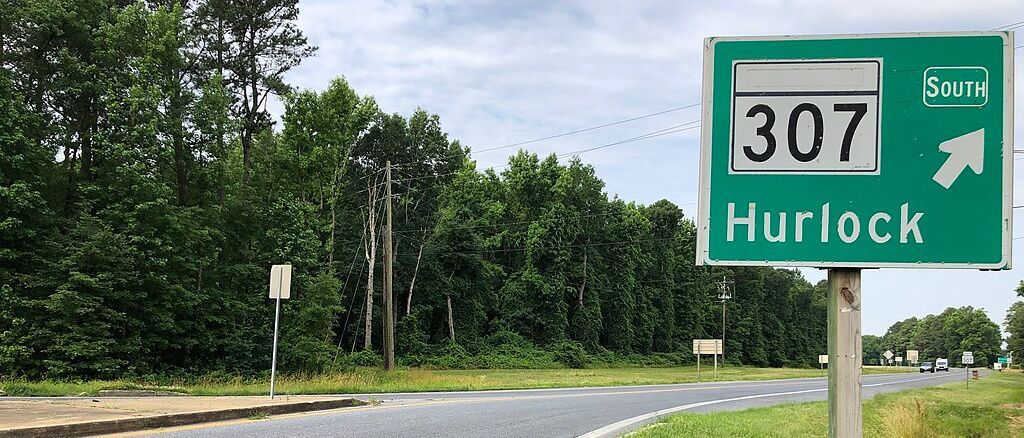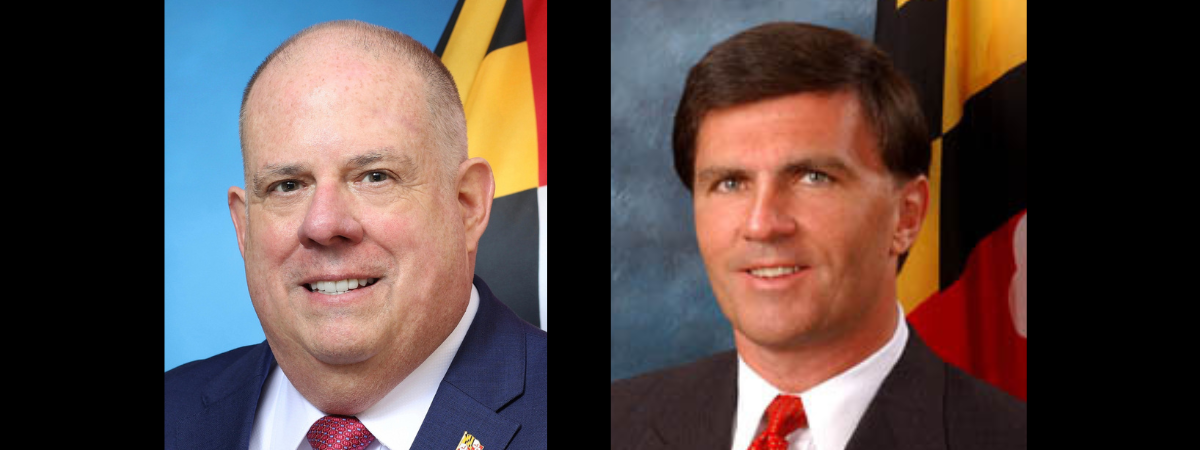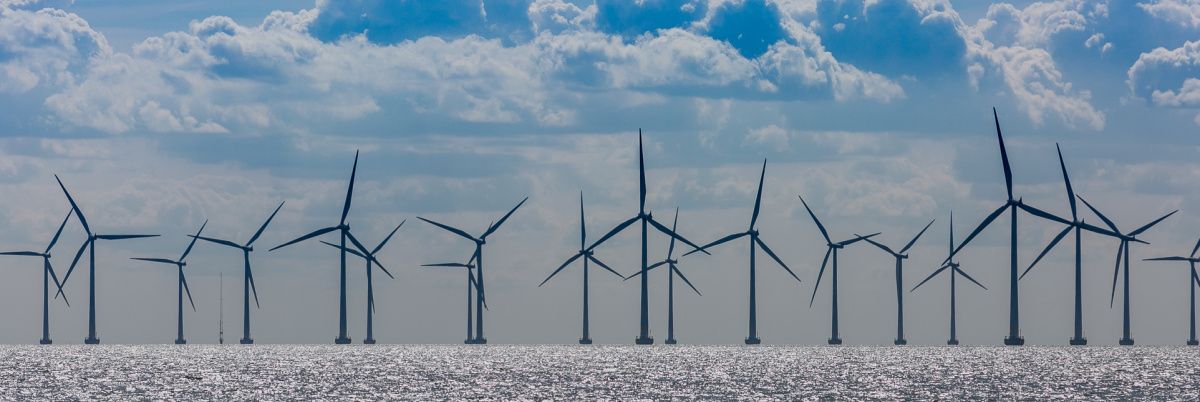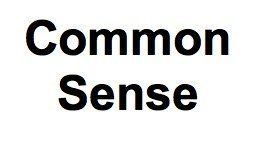Poverty in MD-01 Will Increase with GOP’s One Big Beautiful Bill

Poverty in Maryland’s First Congressional District will increase because of the GOP’s budget reconciliation bill— the “One Big Beautiful Bill Act” — that was narrowly passed in July.
Rep. Andrew P. Harris (R-MD01) voted to pass that wildly unpopular bill and to kick our neighbors off SNAP and Medicaid to give tax cuts to billionaires. That was a cruel choice. More of his constituents will be living in poverty because of the OBBBA’s cuts to programs that support people’s basic needs.
Poverty Rates in Maryland’s First Congressional District
The
official poverty rate for MD-01 has hovered between 8.5% and 9.8% for the last seven years. (Poverty rates for congressional districts were not calculated for 2020 due to the pandemic.)
In 2024, 72,800 of our neighbors were living in poverty.
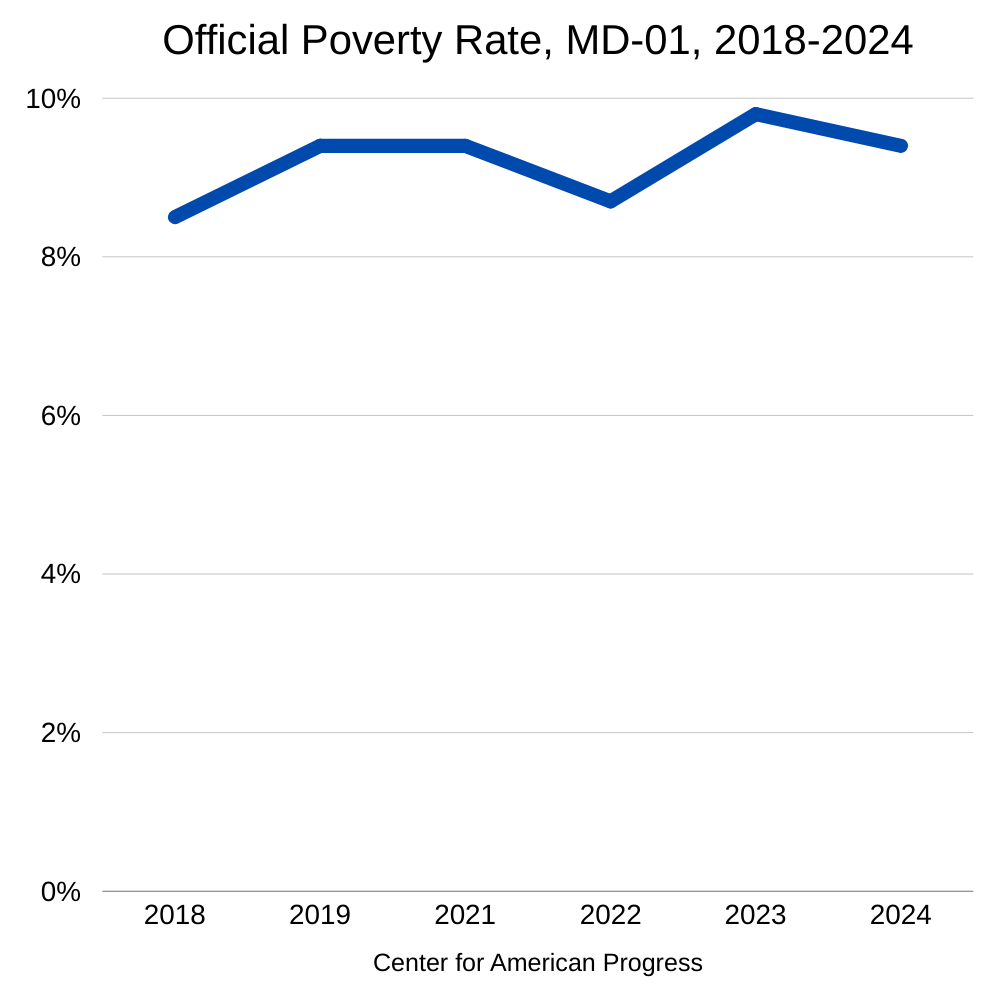
The poverty rate for MD-01 has consistently been lower than the poverty rate for the U.S. during that time and has been close to that for Maryland.
In 2024, over 555,000 Marylanders and 35.9 million people in the U.S. were living in poverty.

The child poverty rate for MD-01 has been higher than the official (overall) poverty rate for the district by 2-3 percentage points for most years. Child poverty decreased in 2022 and 2023 due to pandemic relief programs; the expiration of these programs resulted in a surge in child poverty rates, bringing the rates back up to where they were before covid-19.
One out of every eight MD-01 children is living in poverty.
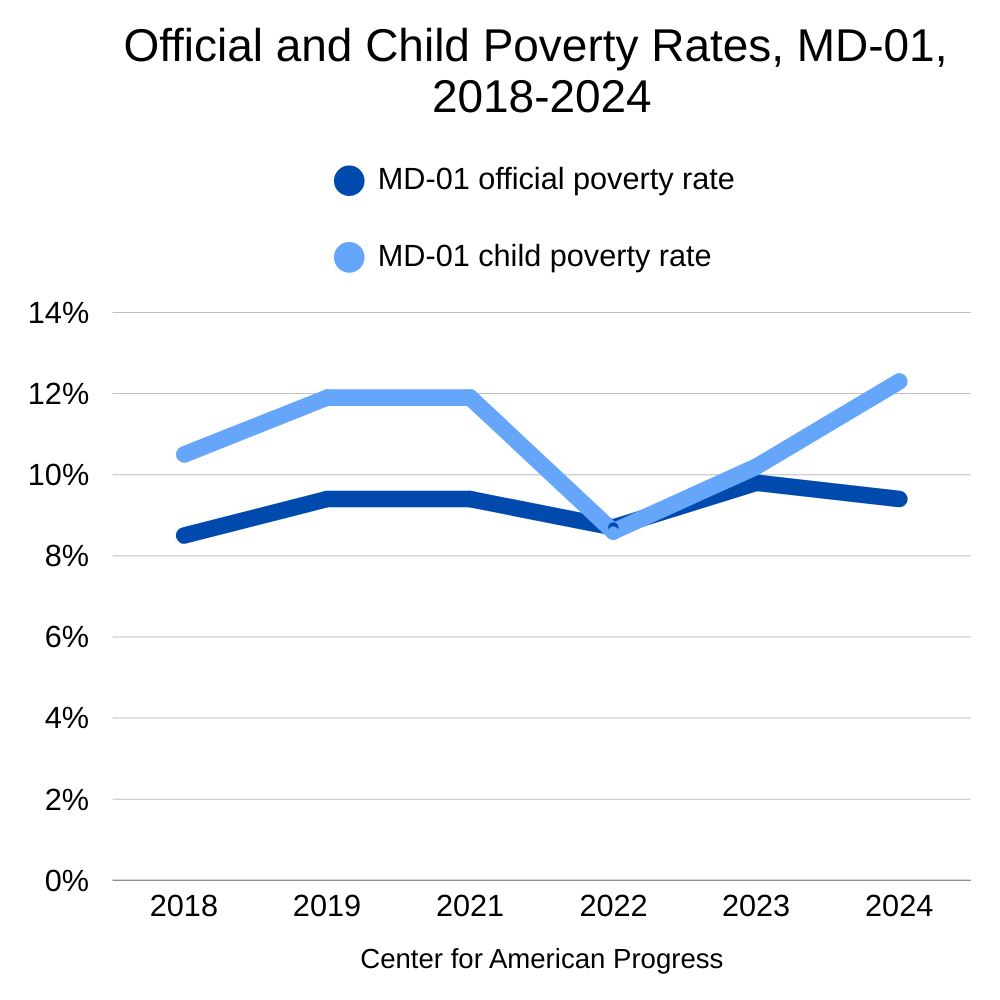
The White poverty rate has always been lower than the overall poverty rate in the First District.
The Hispanic/Latino poverty rate showed a big decrease due to pandemic relief programs and has not yet returned to its high pre-covid rates.
The African American poverty rate is shamefully high, however. While also dipping due to pandemic relief programs, the expiration of those programs has seen the African American rate skyrocket back to its pre-pandemic levels.
More than one in five African Americans in MD-01 is living in poverty, a level that approaches the extreme rates of poverty of African Americans in Mississippi, Alabama, and New Mexico.

What will OBBBA do to MD-01 poverty rates?
OBBBA will ensure that the number of people experiencing severe financial hardship will skyrocket in the years to come as core pillars of the nation’s anti-poverty programs undergo historic cuts.
~Center for American Progress
OBBBA will have devastating consequences on poverty.
Between 26,000-39,000 people in MD-01 will lose Medicaid coverage. More people will go without medical treatment. More medical bills and prescriptions will be paid for out of pocket and more people will suffer medical bankruptcy.
More than 300,000 people in Maryland will have to pay more for health insurance (through ACA and Medicaid expansion), leaving less money for food and housing. Many will drop health insurance coverage due to unaffordability and will have to pay out of pocket for medical visits and prescriptions, if they can pay for them at all.
The OBBBA cuts federal funding for the Supplemental Nutrition Assistance Program by 20% through 2034 — by $187 billion. Of the 42 million people helped nationally, 3.2 million to 4 million participants (8-10%) will lose all or some of their eligibility for the food assistance program.
A study found that the SNAP program kept nearly 3.6 million people out of poverty in 2024; it is one of the country’s most effective anti-poverty programs.
Cuts to SNAP will strain food budgets at a time when grocery prices keep rising. Food insecurity will spike. People will spend money for rent, gas, and medicine instead on food, jeopardizing their housing, jobs, and health. People will go hungry.
Children make up 40% of SNAP participants. Children who lose their SNAP eligibility lose their automatic eligibility for free school meals and summer food assistance as well. Childhood hunger will increase.
In Maryland’s First Congressional District, in 2023-24:
- Almost 34,000 households used SNAP benefits.
- 43% SNAP households included at least one senior.
- 29% of SNAP recipients were people of color.
- 15% were Black, non-Hispanic, higher than 11.8% nationally.
- 6% were Hispanic.
- 2,200 veterans lived in households that used SNAP benefits (9%).
Instead of passing obscene tax cuts for his billionaire buddies and voting for a government shutdown, Rep. Harris needs to protect the most vulnerable of his constituents by safeguarding SNAP, ACA, and Medicaid from devastating cuts that increase poverty in this district and the country.
Jan Plotczyk spent 25 years as a survey and education statistician with the federal government, at the Census Bureau and the National Center for Education Statistics. She retired to Rock Hall.
Common Sense for the Eastern Shore
